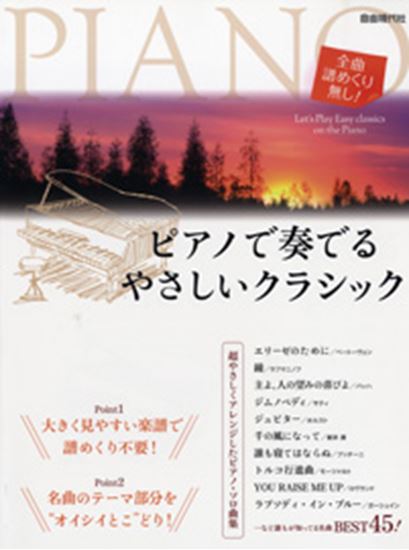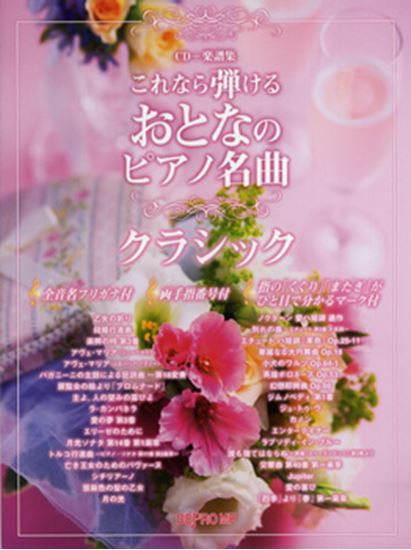Chopin, Frederic : 12 études Op.10
Work Overview
Publication Year:1833
First Publisher:Kistner,Schlesinger,Wessel
Dedicated to:Franz Liszt ("À" SON AMI)
Instrumentation:Piano Solo
Genre:etude
Total Playing Time:33 min 30 sec
Copyright:Public Domain
Commentary (2)
Author : Asayama, Natsuko
Last Updated: July 1, 2008
[Open]
Author : Asayama, Natsuko
There are two origins for Chopin's two sets of Etudes, comprising 24 pieces in total.
One is Johann Sebastian Bach's The Well-Tempered Clavier, specifically the Preludes and Fugues in 24 keys. While the compilation method of such collections was not Bach's invention, The Well-Tempered Clavier set a monumental standard as a model for all musical techniques and forms, and as a norm for learners. Indeed, many composers, both before Chopin (such as Clementi and Kalkbrenner) and after him (such as Liszt, Bartók, and Rachmaninoff, and even Paganini for instruments other than piano), have released collections of Etudes as an homage to Bach. During the latter half of the 18th century, preludes and etudes were often paired; however, as the 19th century began, this combination became less suitable for the times, and they began to be composed as separate collections. Chopin himself also published 24 Preludes, Op. 28, in addition to the Etudes, Op. 10 and 25.
The other origin, of course, lies in the collections of etudes written prolifically as piano instruction books in the first half of the 19th century. These served as comprehensive examples of musical forms and performance techniques, as well as practical training programs. Chopin particularly drew inspiration from the works of Clementi and Moscheles, but he wrote his own etudes "in his own unique way," which was absent in the etude collections of his predecessors. That is, each piece reflects Chopin's conviction that advanced etudes should be advanced music. The reason these pieces are widely loved today, transcending the realm of mere study exercises, is likely due to their lyricism, woven from beautiful melodies and harmonies, which indeed constitutes advanced music. However, there is no doubt that these were indeed practice exercises for himself. In other words, Liszt later did by treating the term "etude" as a genre name. And the reason why these pieces are still invariably assigned to students as a challenge in the final stages of piano education today is that, through all 24 pieces, one can thoroughly learn not only technique but also the essence of Chopin's musicality.
Etudes, Op. 10
The Etudes, Op. 10, were dedicated to Liszt as a mark of respect for him as the greatest pianist of his time (though Chopin did not highly regard Liszt as a composer and maintained a distance from him as a friend in later years). This dedication was likely aimed at eliciting praise from this outstanding virtuoso, and Liszt, as desired, offered unstinting commendation.
The key arrangement of the 12 pieces is as follows:
C major: A minor: E major: C-sharp minor: G-flat major: E-flat minor: C major: F major: F minor: A-flat major: E-flat major: C minor:
One can observe traces of an attempt to place C major at the 1st and 7th positions, and to group the first half with sharp keys and the second half with flat keys (G-flat major is the enharmonic equivalent of F-sharp major). Furthermore, a gradual tonal connection can be observed between each piece. That is, although the relationships are not always constant, they are within the range of related keys. Notably, Etude Op. 25 No. 1 is in A-flat major, creating a structure where no tonal incongruity arises when performing the two collections consecutively.
Etude No. 1
Its C major key and the gradual harmonic changes within a consistent figuration clearly indicate an homage to the Prelude from Book 1, No. 1 of Bach's The Well-Tempered Clavier.
The practice objective is the flexible use of the right wrist and elbow, and managing arm fatigue.
Etude No. 2
The practice objective is the handling of the right-hand inner voice.
Etude No. 3 ("Tristesse")
The practice objective is the handling of both inner voices, and the cantabile expression of the upper voice.
Etude No. 4
This method of melody construction was known as 'spinning out' (Spinnlied) in Bach's time. Small motives gradually develop through variation and inversion.
The practice objective is precise and even articulation in the right hand, and contrast between sections.
Etude No. 5 ("Black Key")
Since the right hand uses only black keys, the power of functional harmony is diminished, creating a somewhat exotic sound.
The practice objective is black-key technique.
Etude No. 6
An example of non-contrapuntal polyphony. Three parts are consistently maintained.
The practice objective is the handling of the left-hand inner voice.
Etude No. 7
The practice objective is legato playing of double notes.
Etude No. 8
The practice objective is right-hand passage work, especially arpeggiated figures spanning a wide range.
Etude No. 9
The practice objective is left-hand arpeggiated figures.
Etude No. 10
Due to the slurs and accents added by Chopin, different meters appear in both hands.
The practice objective is contrasting accents in both hands, and left-hand arpeggiated figures including leaps.
Etude No. 11
The practice objective is grasping wide arpeggios with both hands.
Etude No. 12 ("Revolutionary")
Its common name was given by Liszt. However, while it is true that Chopin learned of the Russian invasion of Warsaw (which occurred in December of the previous year) in Stuttgart in 1831, while en route from Poland to Paris, the popular belief that he composed the Revolutionary Etude in a single burst out of despair and fury is a myth. It is believed that the conception of this piece predates that event, and he may have begun composing it in the autumn of the previous year. Furthermore, while it is indeed full of improvisatory passage work, as is always the case with Chopin's works, the improvisatory quality is merely an effect; the Revolutionary Etude is also meticulously calculated and well-crafted down to the smallest detail.
The practice objective is precise articulation of the left-hand's intricate figures, right-hand octave technique, and perhaps the performance of fortissimo itself.
Author : Imazeki, Shiori
Last Updated: August 7, 2019
[Open]
Author : Imazeki, Shiori
General Overview
Dedicated to Franz Liszt.
The "étude," as its name suggests, aims to overcome necessary technical difficulties in instrumental performance and enhance the perfection of playing technique. Originally, from the mid-18th century onwards, it was used to refer to practice exercises within violin methods. However, in the early 19th century, with the publication of Johann Baptist Cramer's 42 Studies for the Pianoforte, Op. 30 and Op. 40 (1804, 1809), it became established as a new genre in the realm of keyboard instruments as well. Subsequently, virtuoso pianists such as Muzio Clementi, Frédéric Kalkbrenner, and Carl Czerny successively composed études. Furthermore, by around 1830, when Chopin began composing his Études Op. 10, in addition to the études composed with the aforementioned educational intent, "concert études" were composed by virtuoso performers, and a new attempt arose to establish a personal style. Examples include Franz Liszt's études, which were composed inspired by Paganini's virtuosic works for violin.
However, many of Chopin's études, while possessing a more cantabile character compared to those of his predecessors, are believed to have been composed with an educational purpose rather than for concert performance. This can be seen from testimonies that Chopin had his students play his own études after those of predecessors like Cramer and Clementi in their lessons.
Commentary on Each Piece
No. 1
C major. 4/4 time, Allegro.
Composed in November 1830. Published in Leipzig, London, and Paris in 1833 along with No. 2.
The autograph manuscripts (M/190, M/191) preserved at the Fryderyk Chopin Museum in Warsaw indicate "Étude (Exercice) 1" and "Étude (Exercice) 2" for No. 1 and No. 2 respectively, showing that these two works were intended as a pair.
It aims to master arpeggios across a wide range. Works primarily focused on arpeggios can be found in the études of predecessors such as Moscheles' Op. 70, No. 11 and Cramer's D minor Op. 30, No. 18, indicating Chopin's influence from these composers' études. However, this work owes more to Johann Sebastian Bach. The single figuration that dominates the piece in C major, despite harmonic changes, is inspired by Bach's The Well-Tempered Clavier, Book I's Prelude in C major.
According to Chopin's pupil Streicher, Chopin said of this étude that it allows for "the expansion of the hand and the effect of chords played with a violin bow." As this statement suggests, in this work, the right hand's arpeggios sweep across the piano's range of over four octaves from end to end, creating the impression of a violinist effortlessly playing from low to high notes in a single bowing.
When performing, the challenge lies in the expansion and contraction of the right hand, while also requiring flexibility in the right forearm (elbow, wrist, etc.). Furthermore, to play arpeggios smoothly from low to high registers and vice versa, it will also be important to be aware of upper body stability (core).
No. 2
A minor. 4/4 time, Allegro.
Composed in November 1830.
Autograph manuscripts exist at the Fryderyk Chopin Museum in Warsaw (M/191) and the Stiftelsen Musikkulturens Främjande (Foundation for the Promotion of Musical Culture) in Stockholm.
As mentioned in the commentary for No. 1, this work was composed as a pair with No. 1.
The challenge is to smoothly play chromatic scales by tucking the 3rd, 4th, and 5th fingers of the right hand, while articulating the inner voices on the beat with the 1st, 2nd (and occasionally 3rd) fingers. Moscheles' Op. 70, No. 3 (G major) also presents the challenge of playing chromatic scales with the right hand, where the 1st, 2nd, and 3rd fingers are the focus of training. In comparison, Chopin's work aims to strengthen the weaker fingers for striking, and the relatively stronger thumb, etc., carries the inner voice in sixteenth notes, thus requiring even more delicate control. The left hand consists of staccato eighth-note bass single notes and triads, providing harmonic support.
Ternary form: A (1–18) – B (19–35) – A (36–49). Section B temporarily destabilizes the key due to frequent borrowed chords, but from measure 32, the dominant (E) of A minor is sounded in the bass, and the tonic A minor returns simultaneously with the opening motif of A.
No. 3 "Tristesse" 2/4 time, E major, Lento ma non troppo
Composed on August 25, 1832.
Sources
- Sketch (preserved at the Morgan Library & Museum, New York, call number Cary 144)
Autograph manuscripts are preserved at the Fryderyk Chopin Museum in Warsaw (M/192) and the Robert Lehman Collection in New York.
The common name "Tristesse" became established because this piece was used as the theme song in the German biographical film about Chopin, Abschiedswalzer (Farewell Waltz), released in 1934.
The tempo markings in the two extant autograph manuscripts differ: the manuscript in the Lehman Collection is marked "Vivace," while the one in the Chopin Museum is marked "Vivace ma non troppo." These are believed to have been changed to "Lento" by Chopin at the time of publication. This change is thought to have been made to further enhance the lyricism of the work, as Chopin reportedly told his pupil Gutmann, "I have never in my life created such a beautiful melody." The articulation of the inner voices, melody, and bass in both hands is presented as an important challenge.
Ternary form: A (1–21) – B (22–61) – A (62–77). The middle section (B), in contrast to A, becomes increasingly agitated while undergoing frequent modulations. Sixths in symmetrical motion, as if mirrored between the left and right hands, appear for eight measures (mm. 46–53), reaching a peak of passion before the lyrical A theme and the tonic key return.
According to musicologist Jim Samson, the extant autograph manuscript contains the instruction "Presto con fuoco (immediately following)." From this, it is believed that this work forms a pair with the passionate No. 4.
No. 4 C-sharp minor. 4/4 time, Presto
Composed in August 1832.
While No. 3 is dominated by a calm and beautiful melody except for its middle section, No. 4 is fierce and passionate. The opening anacrusis begins with a dominant chord, resolving to the tonic on the first beat of measure 1 before unfolding.
Practice of sixteenth-note passagework with precise articulation. It is composed using the technique of "Fortspinnung," where short motives are varied in pitch and key, and inverted. This was a technique frequently used during the Baroque era, when Bach was active. For example, the intricate sixteenth-note figuration in the right hand appearing in the opening measures 1–2, followed by a leaping figuration (m. 3), is repeated by the left hand at a different pitch in measures 5–7.
No. 5 "Black Keys" G-flat major. 2/4 time, Vivace
Composed 1830–32.
Autograph manuscript preserved at the Fryderyk Chopin Museum in Warsaw (call number M/193).
The challenge is the right hand's triplet figuration on the black keys. Chopin himself, in a letter dated April 25, 1839, to the composer Julian Fontana in Paris, expressed dissatisfaction with Clara Wieck's (later Madame Schumann) performance of this work, stating it was "rather dull for someone who does not know it was written for the black keys." For Chopin, perhaps it was meaningful for this work to be performed within the context of this Étude Collection.
In this work, Chopin allowed the use of the thumb on black keys, which had previously been regularly prohibited, devising an innovative fingering technique. To play consecutive black keys, which are narrower than white keys, it would be necessary to play with the fingers, including the thumb, somewhat flattened.
Ternary form: A (1–16) – B (17–49) – A (50–65), with a Coda (66–85). The right hand plays light passagework over the resolute chords sounded by the left hand.
No. 6
Composed 1830–32.
Autograph manuscript preserved at the Fryderyk Chopin Museum in Warsaw (call number M/194).
E-flat minor. 6/8 time, Andante.
This work, with its polyphonic writing, requires not only the articulation of three voices but also rich expressive ability. While the melody and bass in the right hand are written with long note values, the inner voice in sixteenth notes brings subtle harmonic changes. The challenge is how to express the subtle harmonic changes of the finely fluctuating inner voice while sustaining the melody and bass in long phrases. Along with the subtle harmonic changes, effective pedal changes will also be a crucial key.
The opening theme consists of eight measures. The middle section (from m. 17) gradually shows an increase in emotional intensity through significant modulations and an increase in volume.
No. 7
Composed 1830–32.
Autograph manuscript preserved at the Morgan Library & Museum, New York (call number MA2473).
C major. 6/8 time, Vivace.
The challenge is the right hand's double-note playing, primarily in sixths and thirds. However, it is intended not merely as a double-note exercise, but also for the articulation of its multiple voices.
Although in C major, the return to the tonic chord is only brief and temporary, and the music immediately develops by spinning out new motives. In measures 33 and 42–43, the cadences are extended, and the return to the tonic chord is carefully executed. In measures 55 and 56, the tension towards the following ascending figuration with a hemiola-like rhythm gradually builds, concluding brilliantly.
No. 8
Composed 1830–32.
Autograph manuscript preserved at the Fryderyk Chopin Museum in Warsaw (call number M/195).
F major. 4/4 time, Allegro.
Practice of sixteenth-note passagework for the right hand. This figuration, a mixture of stepwise motion and leaps, is accompanied by slurs and frequently repeats descending and ascending patterns. Meanwhile, the left hand takes on a more dynamic part with bass notes and dotted rhythms.
Ternary form: A (1–28) – B (29–59) – A (60–73) – Coda (74–94). The middle section (from m. 29) temporarily presents the opening theme in the parallel minor, D minor, before developing into sixteenth-note passagework in both hands. In the coda, the right hand continues its sixteenth-note passagework, while the left hand introduces a new melody in the inner voice, creating a contrasting character between the left and right hands, but ultimately concluding brilliantly with a unison passage in both hands.
No. 9
Composed 1830–32.
Autograph manuscript preserved at the Fryderyk Chopin Museum in Warsaw (call number M/196).
F minor. 6/8 time, Allegro molto agitato.
Among Chopin's Études Op. 10, where works for developing right-hand technique are overwhelmingly numerous, this work is one of the few dedicated to the left hand. The challenge is the left hand's arpeggiated accompaniment figuration in sixteenth notes. Since the left hand's arpeggios include notes for the little finger and thumb that are more than an octave apart, flexibility of the wrist and elbow for lateral movement, with the 2nd, 3rd, and 4th fingers as the axis, is required. The right-hand melody appears awkwardly, progressing stepwise intermittently from the off-beat of the first beat, interspersed with eighth rests, and then continuing with leaping motion for three measures.
The middle section (from m. 17) becomes harmonically unstable due to a succession of borrowed chords, and the tension and passion intensify.
No. 10
Composed 1830–32.
Autograph manuscript preserved at the Fryderyk Chopin Museum in Warsaw (D/21).
A-flat major. 12/8 time, Vivace assai.
A work for properly performing right-hand double notes in sixths and different accents between the left and right hands. For the right hand, where single notes and double notes appear alternately, it is important not only to accurately grasp the double notes but also to be aware of the horizontal flow of the upper and inner voices. To play the left hand's arpeggios accurately and "legatissimo" as indicated at the beginning, flexibility of the wrist and elbow, as well as subtle pedal control, are indispensable.
The brilliant theme is first presented legato, and then from measure 13, staccato. After repeated modulations in the middle section, the opening theme returns from measure 54, leading to a brilliant conclusion.
No. 11
Autograph manuscript preserved at the Stiftelsen Musikkulturens Främjande (Foundation for the Promotion of Musical Culture) in Stockholm.
Composed 1830–32.
E-flat major. 3/4 time, Allegretto.
Practice of playing arpeggios in both hands. From a physical perspective, the challenges would be the flexibility and agility of both wrists and forearms, as well as rapid pedal changes.
The highest notes in the right hand function as a melody while also serving as constituent notes of the chords. The lowest notes in the left hand serve as bass notes supporting other voices, but if one focuses solely on the bass voice, it can also be heard as a counter-melody to the right-hand melody.
The sparkling sound of the high notes and the fluctuating nuances of the chords are striking.
No. 12
Autograph manuscript preserved at the Stiftelsen Musikkulturens Främjande (Foundation for the Promotion of Musical Culture) in Stockholm.
Composed 1830–32.
C minor. 4/4 time, Allegro con fuoco.
Known by its common name "Revolutionary," given by Franz Liszt. It is said that Chopin, upon learning of the Russian army's invasion of Warsaw in December 1830, was driven by despair and anger to compose this work the following year, but it is actually believed that he had begun working on it before 1831.
The challenges are the right hand's octave melody and the left hand's intricate sixteenth-note passagework, requiring independence of the left-hand fingers, effortless expansion of the right hand, and even depression of each note in chords including octaves.
It begins with a sense of tension on a C minor dominant seventh chord, and the music proceeds without the tonic chord being sounded until measure 10. The right-hand octave theme (from m. 10) is presented resolutely amidst the urgent atmosphere of the left hand's undulating figuration from low to high notes. After a middle section with intense modulations, the sixteenth-note unison passage for both hands that appeared in measure 5 is recapitulated (from m. 44), and the opening theme returns (from m. 50). In the coda from measure 76, the parallel major, C major, temporarily appears, creating a momentary sense of calm, but the piece ultimately concludes with a brilliant descent from the high to low registers in a unison passage for both hands.
Movements (12)
PTNA & Partner Channel Videos(117items) View More
Recording Date: 2025/8/20
Recording Location: 第一生命ホール(2025年ピティナ・ピアノコンペティションG級)
- favorite_border
- 0
Recording Date: 2025/8/20
Recording Location: 第一生命ホール(2025年ピティナ・ピアノコンペティションG級)
Reference Videos & Audition Selections(53items)
Sheet MusicView More
Scores List (166)

(株)ドレミ楽譜出版社

(株)全音楽譜出版社

(株)全音楽譜出版社

(株)春秋社

(株)全音楽譜出版社

(株)全音楽譜出版社

(株)全音楽譜出版社

(株)全音楽譜出版社

(株)全音楽譜出版社

(株)全音楽譜出版社

(株)全音楽譜出版社

(株)全音楽譜出版社

(株)全音楽譜出版社

(株)全音楽譜出版社

(株)全音楽譜出版社

(株)ドレミ楽譜出版社

(株)ドレミ楽譜出版社

(株)音楽之友社

(株)サーベル社

ミュージックランド

カワイ出版

(株)サーベル社

ミュージックランド

(株)ドレミ楽譜出版社

(株)シンコーミュージックエンタテイメント

(株)ドレミ楽譜出版社

KMP(ケイ・エム・ピー) ケイエムピー

ミュージックランド

KMP(ケイ・エム・ピー) ケイエムピー

(株)リットーミュージック

ミュージックランド

(株)シンコーミュージックエンタテイメント

ミュージックランド

(株)リットーミュージック

(株)ドレミ楽譜出版社

(株)リットーミュージック

(株)学研プラス

ミュージックランド

(株)タイムリーミュージック

KMP(ケイ・エム・ピー) ケイエムピー

(株)ドレミ楽譜出版社

ミュージックランド

(株)シンコーミュージックエンタテイメント

(株)ドレミ楽譜出版社

(株)シンコーミュージックエンタテイメント

(株)リットーミュージック

ミュージックランド

(株)リットーミュージック

ミュージックランド

(株)シンコーミュージックエンタテイメント

(株)リットーミュージック

ミュージックランド

(株)全音楽譜出版社

(株)ヤマハミュージックエンタテインメントホールディングス

(株)シンコーミュージックエンタテイメント

(株)全音楽譜出版社

(株)全音楽譜出版社

ハンナ(ショパン)

(株)ヤマハミュージックエンタテインメントホールディングス

(株)ヤマハミュージックエンタテインメントホールディングス

(株)ヤマハミュージックエンタテインメントホールディングス

(株)ドレミ楽譜出版社

(株)ヤマハミュージックエンタテインメントホールディングス
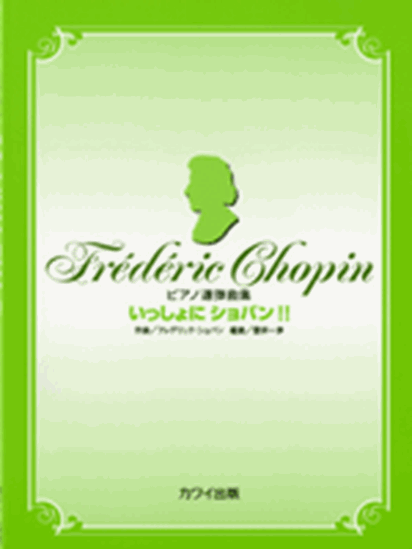
カワイ出版

(株)シンコーミュージックエンタテイメント

ハンナ(ショパン)

ハンナ(ショパン)

ミュージックランド

ミュージックランド

ミュージックランド

(株)シンコーミュージックエンタテイメント

(株)ドレミ楽譜出版社

(株)ドレミ楽譜出版社

(株)シンコーミュージックエンタテイメント

KMP(ケイ・エム・ピー) ケイエムピー

(株)ヤマハミュージックメディア

(株)シンコーミュージックエンタテイメント

(株)シンコーミュージックエンタテイメント

(株)シンコーミュージックエンタテイメント

ハンナ(ショパン)

(株)リットーミュージック

(株)ドレミ楽譜出版社

(株)共同音楽出版社

(株)ヤマハミュージックエンタテインメントホールディングス

(株)ヤマハミュージックエンタテインメントホールディングス

(株)シンコーミュージックエンタテイメント

KMP(ケイ・エム・ピー) ケイエムピー

(株)シンコーミュージックエンタテイメント

ハンナ(ショパン)

ハンナ(ショパン)

ハンナ(ショパン)
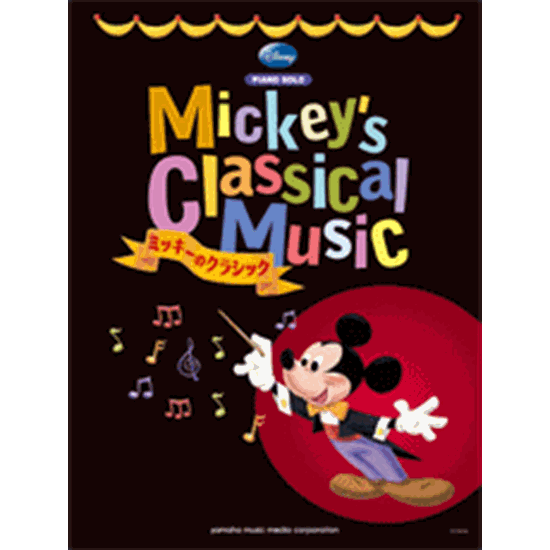
(株)ヤマハミュージックエンタテインメントホールディングス

KMP(ケイ・エム・ピー) ケイエムピー

ハンナ(ショパン)

ハンナ(ショパン)

(株)ヤマハミュージックエンタテインメントホールディングス

(株)ヤマハミュージックエンタテインメントホールディングス

(株)ヤマハミュージックエンタテインメントホールディングス

KMP(ケイ・エム・ピー) ケイエムピー

(株)ドレミ楽譜出版社

(株)シンコーミュージックエンタテイメント

(株)ヤマハミュージックエンタテインメントホールディングス

ミュージックランド

(株)ヤマハミュージックエンタテインメントホールディングス

(株)ドレミ楽譜出版社

ミュージックランド

デプロMP

(株)シンコーミュージックエンタテイメント

(株)ヤマハミュージックエンタテインメントホールディングス

(株)ヤマハミュージックメディア

(株)全音楽譜出版社

ミュージックランド

(株)シンコーミュージックエンタテイメント

(株)ドレミ楽譜出版社

(株)シンコーミュージックエンタテイメント

(株)自由現代社

(株)ヤマハミュージックエンタテインメントホールディングス

ミュージックランド

(株)シンコーミュージックエンタテイメント

KMP(ケイ・エム・ピー) ケイエムピー

(株)ドレミ楽譜出版社

(株)ヤマハミュージックエンタテインメントホールディングス

(株)シンコーミュージックエンタテイメント

(株)自由現代社

(株)音楽之友社

(株)全音楽譜出版社

ジェスク音楽文化振興会
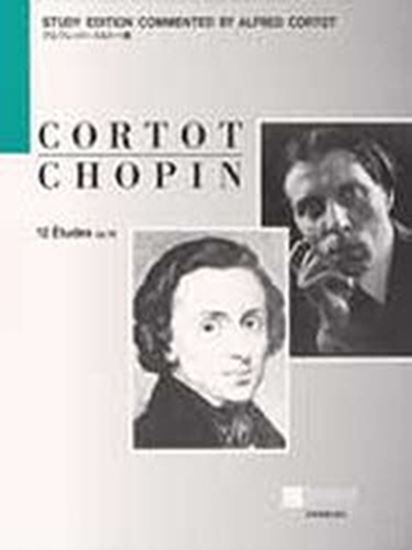
(株)全音楽譜出版社

ヘンレー

ヘンレー

(株)全音楽譜出版社

ヘンレー

ジェスク音楽文化振興会

(株)全音楽譜出版社

ヘンレー

ポーランド音楽出版社

(株)ヤマハミュージックエンタテインメントホールディングス

ロケットミュージック

(株)音楽之友社

(株)ヤマハミュージックエンタテインメントホールディングス

(株)ヤマハミュージックエンタテインメントホールディングス

(株)学研プラス

Musikverlag Doblinger

Musikverlag Doblinger

Peters

(株)ヤマハミュージックエンタテインメントホールディングス






































